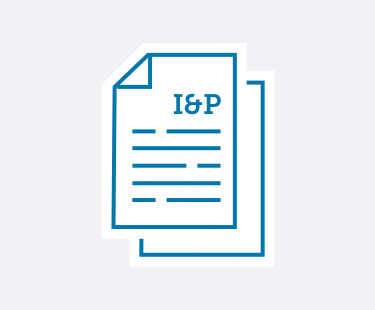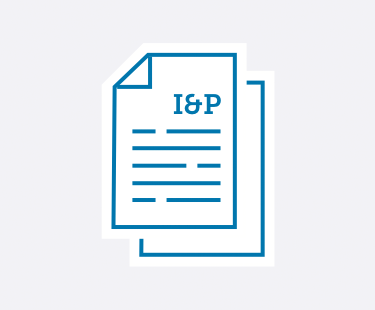

Learn practical strategies to handle emerging trends and leadership challenges in private schools.
No matter if you’re a School Head, Admission Director, Development Director, Board member, or any other private school administrator—Ideas & Perspectives, ISM’s premier private school publication, has strategic solutions for the pervasive problems you face.
- Tuition not keeping pace with your expenses? In I&P, explore how to use strategic financial planning to create your budget and appropriately adjust your tuition.
- Enrollment dropping off? Discover how to implement the right admission and enrollment management strategies that engage your community—and fill your classrooms.
- Trouble retaining teachers? Learn how you can best support your teachers using ISM’s Comprehensive Faculty Development framework. Your faculty members will become more enthusiastic about their roles—which ultimately improves student outcomes.
- Fundraising campaigns not as successful as you’d hoped? Implement ISM’s practical advice and guidance to build a thriving annual fund, construct an effective capital campaign, and secure major donors—no matter your community size or location.
- Not sure how to provide professional development—for you and your staff? Learn ways to develop and fund a successful professional development strategy. You can improve teacher-centered satisfaction and growth, which in turn strengthens student-centered learning.
- Problematic schedule? You can master the challenges of scheduling with the help of ISM’s practical advice, based on our experience with hundreds of schools and our time-tested theories.
- And so much more.
I&P has shared targeted research, up-to-date insight, and sound theory with school leaders since 1975. More than 8,500 private school decision-makers find the answers to their schools’ administrative and governance matters in our advisory letter. We give you the strategic answers you need.
As an ISM Silver or Gold member, you not only receive issues online and in print 10 times a year, but you have access to more than 600 articles in our web archive. Need help? It’s at your fingertips! Learn more and sign up for ISM's membership here.
Search
See the articles from our latest issue of Ideas & Perspectives.
The Management Team: Profiled for Success
Volume 32 No. 13 // October 16, 2007
As you, the School Head, think about the school five years from now, you must consider the Management Team (the Head's direct reports) and ask whether the team members can take the school where the Board, in its strategic plan, wants it to go. You can't do it alone; this group of administrators is critical to meeting (a) the strategic plan goals and (b) the school growth items as laid out in the annual administration agenda.
1. Already a member? Click here to login.
2. Not a member? Click here to become a member.
3. Not sure? We'll help you figure it out.
Your Strategic Financial Policy Document: A Sample
Volume 32 No. 13 // October 16, 2007
ISM’s recommended 13-line strategic financial plan model has been in widespread use for some time. This short, six-year (i.e., displayed in six columns) expression of your strategic plan comprises a one-page attachment to the plan itself and represents the quantitative expression of that plan. The great virtue of the 13-line model is that it allows Board members who are not mathematically inclined or have little financial expertise—often either a majority or a substantial minority—to understand the financial ramifications of the positions they take on strategic issues. The 13-line document attends to the main strategic numbers and, by purposeful exclusion, leaves everything else alone. (And the “everything else,” of course, falls to the Finance Committee, thereby honoring a core ISM strategic-Board concept—a differentiation of function.)
1. Already a member? Click here to login.
2. Not a member? Click here to become a member.
3. Not sure? We'll help you figure it out.
Helping Board Members Understand Your School's Educational Programs
Volume 32 No. 12 // September 30, 2007
The Board does not need to be involved in your school’s educational program, either as individuals or as a group. Discussions and decisions about the program are not appropriate topics for these volunteer leaders. The Board has hired you, as School Head, to determine programs and supervise their delivery.
1. Already a member? Click here to login.
2. Not a member? Click here to become a member.
3. Not sure? We'll help you figure it out.
Scheduling and Faculty Culture
Volume 32 No. 12 // September 30, 2007
Faculty culture—the pattern of customs, ideas, and assumptions driving the faculty’s collective set of professional attitudes and behaviors—is profoundly impacted by conversations about schedule. The reasons for this are easy to understand. Schedule—a complex set of data around time, program, space, and people—cannot be changed without changing the parameters of each teacher’s professional life. Schedule can affect a teacher’s performance and job satisfaction in many ways.
1. Already a member? Click here to login.
2. Not a member? Click here to become a member.
3. Not sure? We'll help you figure it out.
Money Follows Performance—When Validated
Volume 32 No. 12 // September 30, 2007
ISM has long maintained that money follows performance. When privateindependent schools provide the education promised by their mission statements and admission materials, parents are willing to enroll (and reenroll) their children, and donors are willing to contribute on a recurring basis. As accurate as this aphorism continues to be, given the current challenges schools face in attracting and retaining students and donations, it now needs to be modified with—“when validated.”
1. Already a member? Click here to login.
2. Not a member? Click here to become a member.
3. Not sure? We'll help you figure it out.
Appropriate Tuition Adjustment: Recasting Financial Figures, 2007–08
Volume 32 No. 11 // September 8, 2007
Each fall, ISM publishes a set of conversion factors to facilitate the recasting of previous tuitions into current dollars. (See the table on the next page.) We continue to use the Urban Consumer Price Index (CPI-U). However, we also realize that the CPI-U does not completely reflect expenditures in schools; it can only serve as a base figure. There are compelling arguments for adjusting your tuition at a rate 2% or more above the overall inflation rate.
1. Already a member? Click here to login.
2. Not a member? Click here to become a member.
3. Not sure? We'll help you figure it out.
View Your Human Resources Activities as a Mission-Centered Life Cycle of Events
Volume 32 No. 11 // September 8, 2007
Activities related to human resources—e.g., interviewing candidates, orienting and mentoring new employees, providing employee benefits, making contract renewal decisions—are often perceived by schools as isolated actions rather than as part of an integrated whole. Shifting perspective to view these activities cohesively—in the context of your school's mission, culture, and values—is critical for three reasons.
1. Already a member? Click here to login.
2. Not a member? Click here to become a member.
3. Not sure? We'll help you figure it out.
The Head's Contract: Liquidated Damages
Volume 32 No. 11 // September 8, 2007
After further review of the Annotated Head Contract published in I&P earlier this year, ISM has decided to clarify one of the sections of the sample contract. The paragraph in question (No. 14) states: “In the event Head breaches this agreement or is terminated for cause (including but not limited to gross misconduct, insubordination, failure to perform), School, in addition to all other applicable remedies, may cease all forms of compensation immediately. The parties agree that calculation of actual damages to the school would be extremely difficult and therefore agree that an amount of $______ per day, for the remaining days of the contract, will be payable to the school by the Head as liquidated damages.”
1. Already a member? Click here to login.
2. Not a member? Click here to become a member.
3. Not sure? We'll help you figure it out.
The Scheduler's Power: What's Good for Your Students?
Volume 32 No. 10 // August 17, 2007
The schedule might be considered half of the answer to the question: How does our school carry out its mission and support students? It tells how time is allocated (and therefore what is considered important); it shows the relationships among time, space, people, and program—and implicitly places values on these aspects of the school. The schedulers thus play an important role in ensuring that the mission can be delivered optimally to the students.
1. Already a member? Click here to login.
2. Not a member? Click here to become a member.
3. Not sure? We'll help you figure it out.
Seven Gift Planning Tips for a Small Development Office
Volume 32 No. 10 // August 17, 2007
As the School Head or Director of Development of a small private-independent school, you must ensure that you provide your donors with the services and opportunities that will maximize their giving potential. If you’ve built donor-centered programs based on ISM’s Comprehensive Development Model, and you are prepared to listen to your donors and to respond to their charitable needs, then you are ready for gift planning. This is the process of designing gift strategies that fit their personal financial and philanthropic circumstances.
1. Already a member? Click here to login.
2. Not a member? Click here to become a member.
3. Not sure? We'll help you figure it out.


